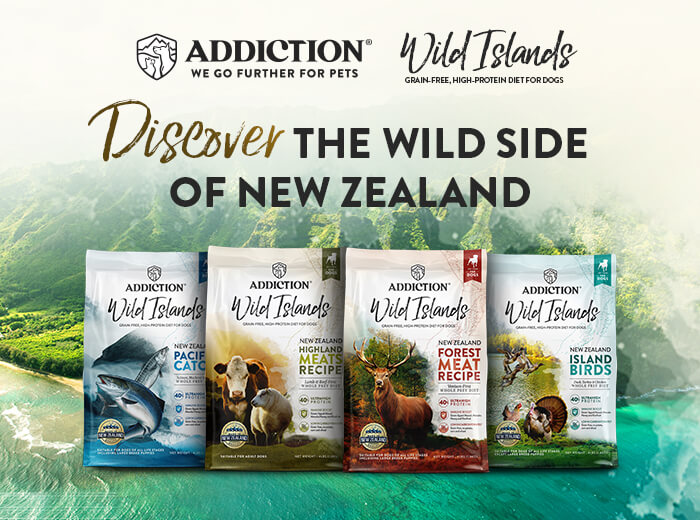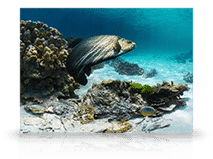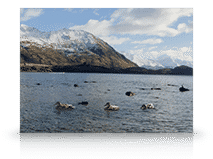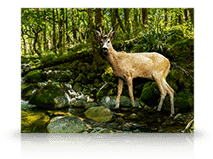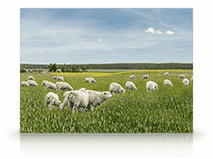Also known as the prey model diet, whole prey nutrition consists of feeding the whole animal: skin, feathers, edible bones, and organs. It’s high in protein and low in carbohydrates to mimic how wild cats and wolves eat in the wild. Whole prey nutrition is deemed the most natural way of feeding pets—no wonder the growing demand for this diet in the pet food industry.
However, the whole prey diet focuses on raw feeding, which raises several problems. Aside from safety issues with raw foods having been proven to contain germs like Salmonella and Listeria, raw feeding also risks your pets developing health problems due to an unbalanced diet.
While there are a lot of raw dog food recipe guides you can easily access online, it remains a challenge to ensure pets get enough calories, protein, vitamins, and minerals in a raw diet.
The deal with organ meats
One of the most interesting components of a whole prey diet is organ meats. Considered a “prized meat”, organ meats are highly regarded for their outstanding nutritional value and flavor. Some of the most common types of organ meat fed to pets are:
-
Kidney
Kidneys are particularly rich in riboflavin or B2 and zinc. B2 “helps prevent cataracts and aids in energy production by cells of the body,” said Dr. Shawn Messonnier, DVM. Signs of B2 deficiency include weight loss and dermatitis.
-
Brain
Brain meat contains Omega-3 fatty acids, phosphatidylcholine, and phosphatidylserine. Omega-3 promotes healthy blood flow in the brain, while phosphatidylcholine and phosphatidylserine are nutrients beneficial in improving cognitive function and memory.
-
Heart
The heart is a good source of CoQ10, an antioxidant that prevents free radicals from causing damage to the body. It’s also rich in Taurine, an amino acid that promotes a healthy heart. In dogs and cats, non-hereditary Dilated cardiomyopathy (DCM) cases are associated with Taurine inadequacy. Cats especially need this in their diet as, unlike dogs, they can’t synthesize Taurine in their own body.
-
Liver
The liver is rich in B vitamins that promote healthy metabolism and provides energy by converting food into glucose. Examples of B vitamins are thiamin, niacin, pantothenic acid, pyridoxine, biotin, folate, and cobalamin.
-
Tripe
Tripe comes from the stomach lining of farm animals like cattle, sheep, and deer. Tripe is rich in probiotics that promote good digestion and selenium, which boosts the immune system.
Why a whole prey diet is low in carbohydrates
On average, a wolf’s diet consists of 49% protein, 44% fat, and 6% carbohydrates. Wolves have little to no need for carbohydrates as they lack salivary amylase, an enzyme that helps break down carbohydrates. But to survive, these canines underwent genetic changes to adapt to a diet with more starch. Hence, modern dogs can now derive nutrients from both plant and animal sources.
High-protein diet and its benefits
Protein plays a crucial role in keeping pets healthy. It doesn’t just serve as a nutrient that helps build and maintain muscles. It also creates hormones that regulate the body.
Protein is made up of amino acids. Dogs need 10 essential amino acids, while cats require 11. Cats need more amino acids as they break down protein faster than dogs. Aside from this, there are certain amino acids they can’t synthesize on their own, like Taurine and Arginine.
A pet food is considered high-protein if its protein level is more than 30%. Benefits of a high-protein diet for pets include the following:
- Boost energy level
- Promote muscle development
- Maintains healthy weight
- Improved skin and coat health
It’s essential to note that protein level alone isn’t enough to ensure that your pets will reap all these benefits. Protein quality and source are also important. Quality protein comes from an animal that is raised close to how nature intended – without added artificial hormones and antibiotics and is fed with quality food.
High-quality protein
Isolated from the rest of the world, New Zealand is one of the best quality protein sources for a whole prey-inspired diet.
Wild Islands is a prey-based diet formulated close to our dogs’ and cats’ natural food in the wild. It has ultrahigh protein levels and is made with sustainably-sourced and high-quality proteins.
True to a wolf’s diet, Wild Islands is low in carbohydrates. It’s free from grains, potato, corn, and wheat and enriched with nutrient-dense organ meats like liver, heart and tripe.
It’s available in 4 wildly delicious flavors:
-
ISLAND BIRDS
Island Birds features premium New Zealand Duck, Turkey and Chicken, highly digestible and flavorful protein sources. It’s made with Chicken Liver, a good source of protein, fat, and vitamin A.
- Protein percentage for dogs: 40%
- Protein percentage for cats: 45%
-
FOREST MEAT RECIPE
Forest Meat Recipe features New Zealand Venison, a novel premium protein source that’s proven highly palatable. It’s enriched with Venison Tripe that contains digestive enzymes that help with digestion and Venison Heart rich in iron.
-
PACIFIC CATCH
Pacific Catch features whole New Zealand King Salmon, Mackerel and Hoki, which are naturally rich in Omega-3 and Omega-6 fatty acids.
-
HIGHLAND MEATS RECIPE
Highland Meats Recipe features savory New Zealand Lamb rich in amino acids and New Zealand Beef, a healthy source of iron. It features Lamb Liver rich in B vitamins and Beef Tripe high in selenium.
Addiction’s newest pet food range is also enhanced with the finest immune-boosting ingredients from New Zealand. It has Green-lipped Mussel, also known as the “miracle from the sea” for its anti-inflammatory properties, Kiwifruit rich in vitamin C, and Manuka Honey, the crème de la crème of all kinds of honey for its strong antibacterial properties.
Wild Islands provides your pets whole prey nutrition without the risks of issues seen in raw feeding – health issues due to an unbalanced diet and germ contamination.
Mirror your pet’s natural diet. Unleash the best in your pet with Wild Islands.
Learn more about Wild Islands here.
Where to buy Addiction – Addictionpet.com









